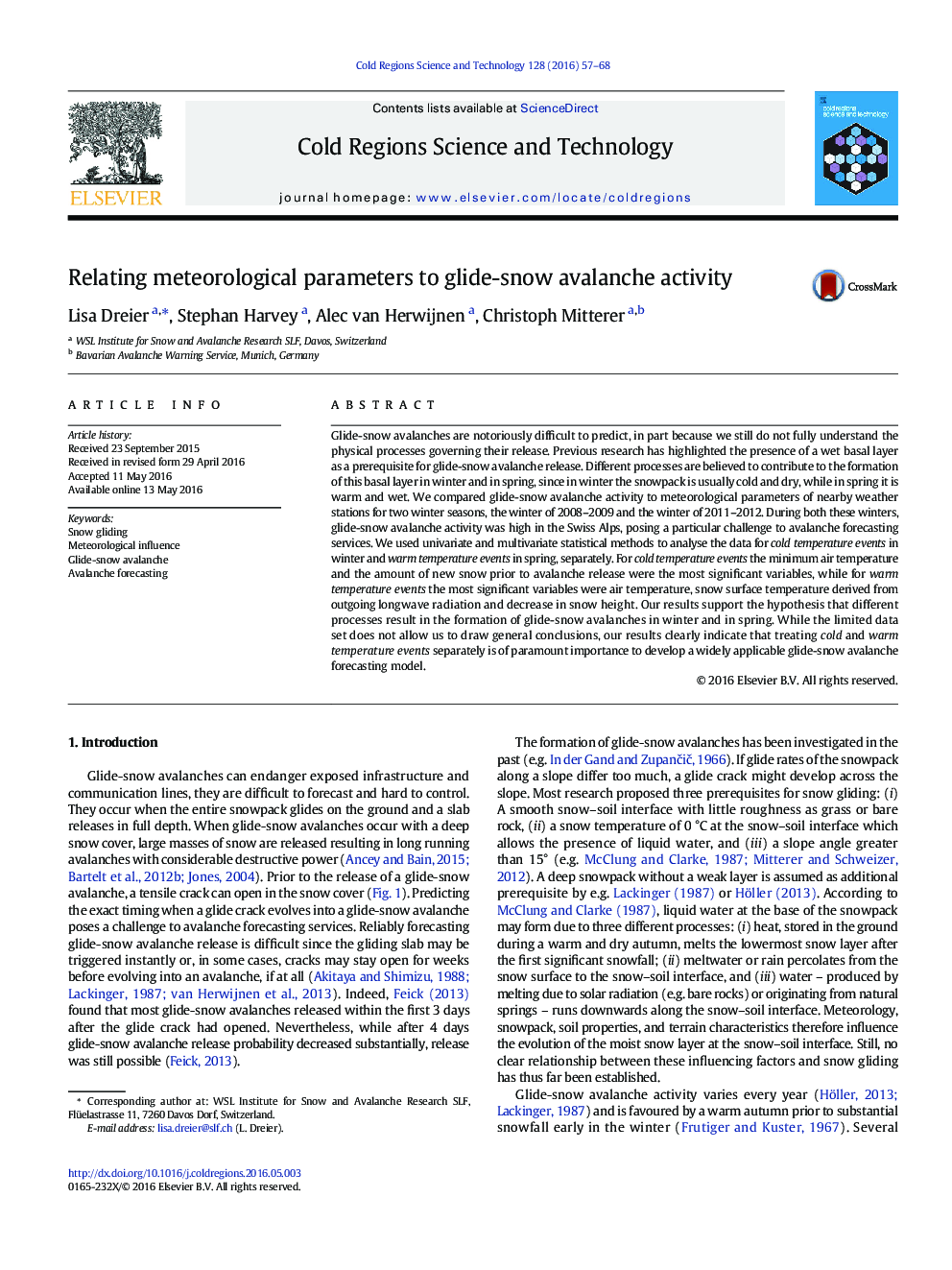| کد مقاله | کد نشریه | سال انتشار | مقاله انگلیسی | نسخه تمام متن |
|---|---|---|---|---|
| 4675664 | 1634436 | 2016 | 12 صفحه PDF | دانلود رایگان |
• We investigated the influence of meteorological parameters on glide-snow avalanches.
• In winter, glide-snow avalanches occurred after heavy snowfall and on warm days.
• In spring, glide-snow avalanches were related to melting and snowpack settlement.
• Cold (winter) and warm (spring) temperature events have different meteorological drivers.
Glide-snow avalanches are notoriously difficult to predict, in part because we still do not fully understand the physical processes governing their release. Previous research has highlighted the presence of a wet basal layer as a prerequisite for glide-snow avalanche release. Different processes are believed to contribute to the formation of this basal layer in winter and in spring, since in winter the snowpack is usually cold and dry, while in spring it is warm and wet. We compared glide-snow avalanche activity to meteorological parameters of nearby weather stations for two winter seasons, the winter of 2008–2009 and the winter of 2011–2012. During both these winters, glide-snow avalanche activity was high in the Swiss Alps, posing a particular challenge to avalanche forecasting services. We used univariate and multivariate statistical methods to analyse the data for cold temperature events in winter and warm temperature events in spring, separately. For cold temperature events the minimum air temperature and the amount of new snow prior to avalanche release were the most significant variables, while for warm temperature events the most significant variables were air temperature, snow surface temperature derived from outgoing longwave radiation and decrease in snow height. Our results support the hypothesis that different processes result in the formation of glide-snow avalanches in winter and in spring. While the limited data set does not allow us to draw general conclusions, our results clearly indicate that treating cold and warm temperature events separately is of paramount importance to develop a widely applicable glide-snow avalanche forecasting model.
Journal: Cold Regions Science and Technology - Volume 128, August 2016, Pages 57–68
